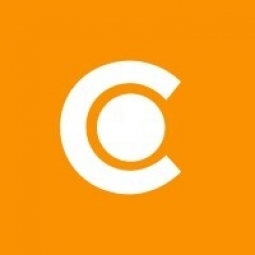Technology Category
- Application Infrastructure & Middleware - Middleware, SDKs & Libraries
- Platform as a Service (PaaS) - Application Development Platforms
Applicable Industries
- Buildings
- Retail
Applicable Functions
- Sales & Marketing
Use Cases
- Building Automation & Control
Services
- System Integration
About The Customer
Lalique is a timeless symbol of luxury and French craftsmanship since 1888. The brand keeps the tradition of glassmaking alive with a beautiful collection of homeware, jewelry, and art pieces, while also breaking new ground with a line of signature fragrances. With several subsidiaries offering luxury products and services around the globe, Lalique has invested in technologies to help it reach customers more effectively and streamline its operations. The company operates in different countries, utilizing several ERPs and information systems across its offices in North America, Europe, and Asia.
The Challenge
Lalique, a world-renowned luxury brand, faced the challenge of managing its assets consistently across its global subsidiaries and departments. The company operates in different countries, utilizing several ERPs and information systems across its offices in North America, Europe, and Asia. The digital team in Switzerland identified an opportunity to handle product and brand assets more efficiently by implementing a digital asset management (DAM) platform. After a successful trial period with the perfume department, Lalique decided to expand the use case to other areas of the business. However, the team was unsure if they had the right DAM solution in place for the task. They needed an alternative DAM solution that would be easier to implement across multiple departments and provide more flexibility for the users.
The Solution
Lalique's North America subsidiary was already using Canto to manage their digital assets. Canto offered a simple implementation process that made it easy to migrate data from the previous DAM and integrate Lalique’s existing applications. It also provided an intuitive user experience that would allow people to start using it right away without an extensive onboarding process. The initial implementation got underway quickly with the digital team in Switzerland. They began by migrating data from the previous DAM and recreating the same functional scope and organization of assets. Once Lalique’s digital assets had been consolidated into a single source of truth within Canto, the digital team could get started on organizing everything, so that files would be easy to locate when they’re needed. To improve searchability, they implemented a process for adding metadata to assets as they were uploaded into the library. The digital team used Canto’s Portals feature to empower Lalique Beauty Service departments to curate the assets they needed to work with and distribute. The process went so smoothly that the team decided to start rolling Canto out to other departments.
Operational Impact
Quantitative Benefit

Case Study missing?
Start adding your own!
Register with your work email and create a new case study profile for your business.
Related Case Studies.

Case Study
Energy Saving & Power Monitoring System
Recently a university in Taiwan was experiencing dramatic power usage increases due to its growing number of campus buildings and students. Aiming to analyze their power consumption and increase their power efficiency across 52 buildings, the university wanted to build a power management system utilizing web-based hardware and software. With these goals in mind, they contacted Advantech to help them develop their system and provide them with the means to save energy in the years to come.

Case Study
Intelligent Building Automation System and Energy Saving Solution
One of the most difficult problems facing the world is conserving energy in buildings. However, it is not easy to have a cost-effective solution to reduce energy usage in a building. One solution for saving energy is to implement an intelligent building automation system (BAS) which can be controlled according to its schedule. In Indonesia a large university with a five floor building and 22 classrooms wanted to save the amount of energy being used.

Case Study
Improving Production Line Efficiency with Ethernet Micro RTU Controller
Moxa was asked to provide a connectivity solution for one of the world's leading cosmetics companies. This multinational corporation, with retail presence in 130 countries, 23 global braches, and over 66,000 employees, sought to improve the efficiency of their production process by migrating from manual monitoring to an automatic productivity monitoring system. The production line was being monitored by ABB Real-TPI, a factory information system that offers data collection and analysis to improve plant efficiency. Due to software limitations, the customer needed an OPC server and a corresponding I/O solution to collect data from additional sensor devices for the Real-TPI system. The goal is to enable the factory information system to more thoroughly collect data from every corner of the production line. This will improve its ability to measure Overall Equipment Effectiveness (OEE) and translate into increased production efficiencies. System Requirements • Instant status updates while still consuming minimal bandwidth to relieve strain on limited factory networks • Interoperable with ABB Real-TPI • Small form factor appropriate for deployment where space is scarce • Remote software management and configuration to simplify operations

Case Study
Powering Smart Home Automation solutions with IoT for Energy conservation
Many industry leaders that offer Smart Energy Management products & solutions face challenges including:How to build a scalable platform that can automatically scale-up to on-board ‘n’ number of Smart home devicesData security, solution availability, and reliability are the other critical factors to deal withHow to create a robust common IoT platform that handles any kind of smart devicesHow to enable data management capabilities that would help in intelligent decision-making









